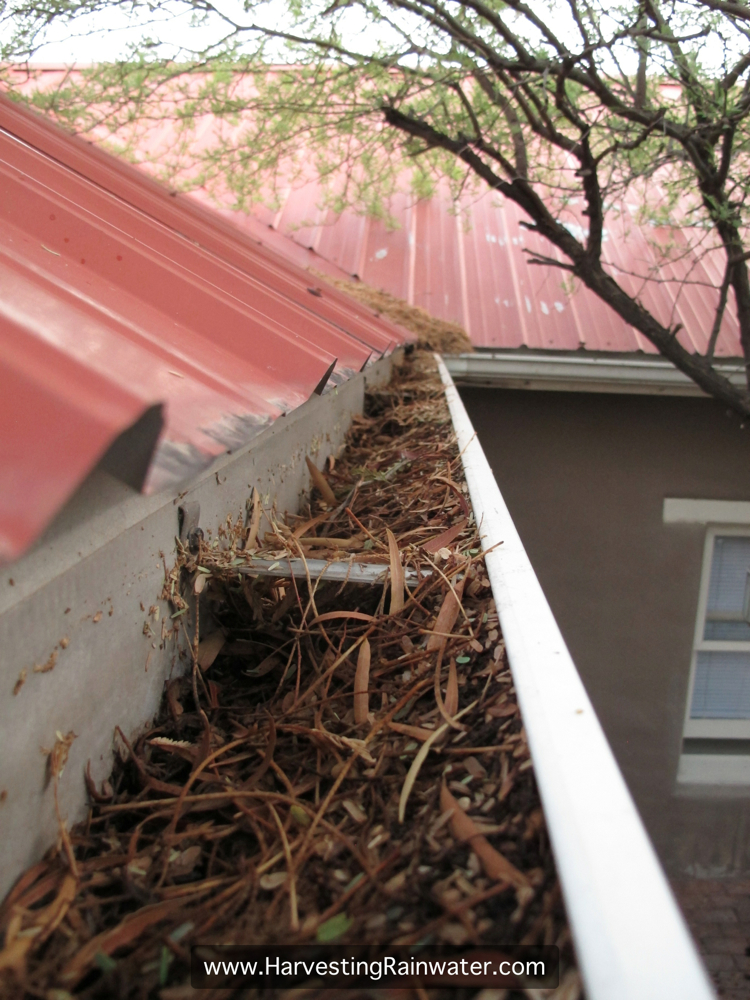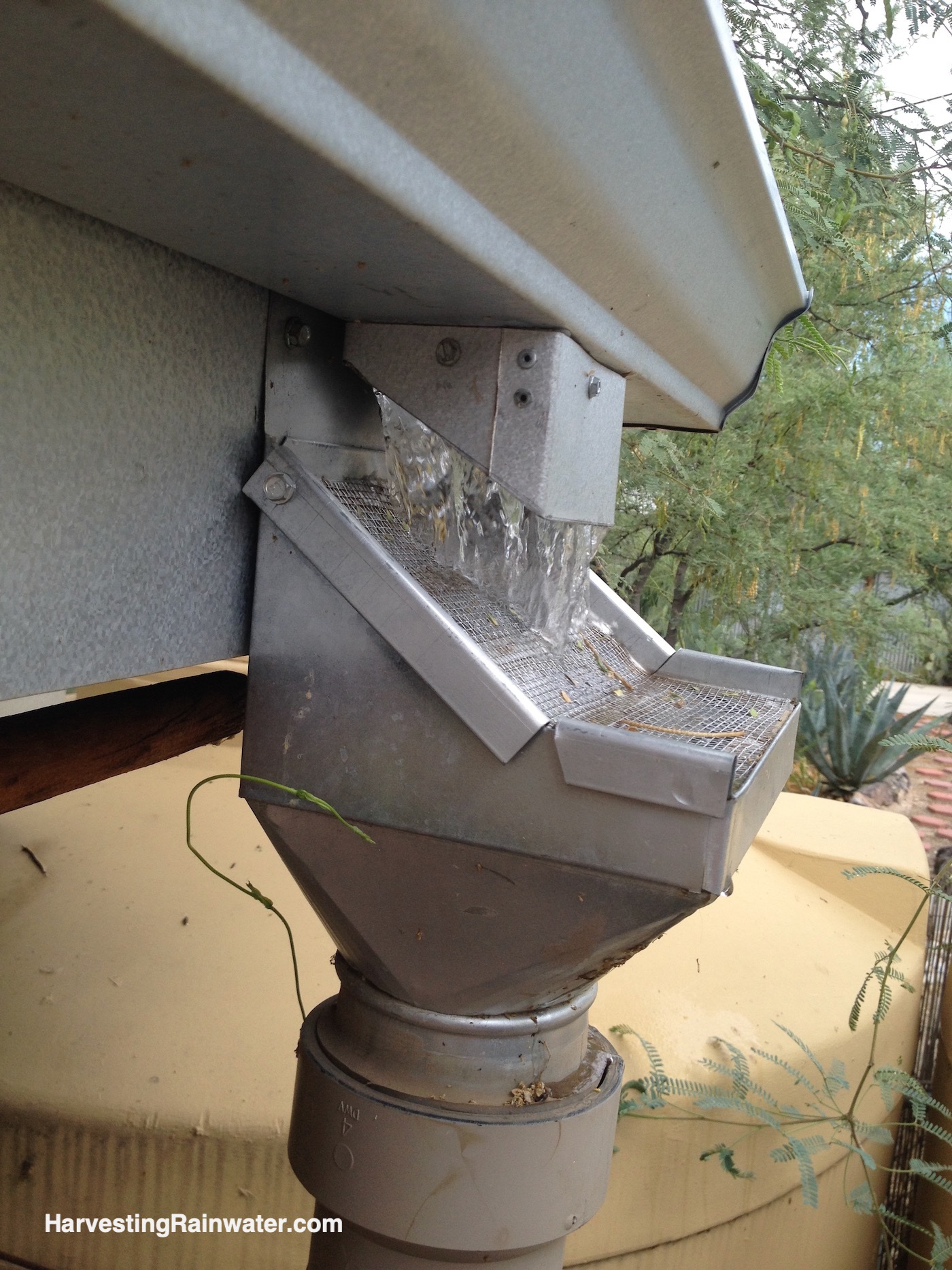Rainhead Screens
by Brad Lancaster © 2014
www.HarvestingRainwater.com
Around the world among rainwater-harvesting cultures, people clean their water catchments before the rain. Children often have this responsibility, sweeping a flat roof- or patio-catchment. At my home, the responsibility is mine, with the cleaning of my roof gutters and all inlets to curb cuts along the street. I have to do this at the beginning of every rainy season because the gutters and curb cuts fill up with abundant pollen, pods, and leaves from overhanging trees.
If you don’t clean your gutters and curb cuts, you’ll likely lose a lot of water you could’ve otherwise captured.

But during the rainy season (after my pre-season gutter cleaning) the majority of the roof debris that falls is passively washed away via a rainhead screen. I love these! Unlike a gutter screen you can see them from the ground, they clean themselves, and as you’ll see in my newly updated Rainhead Screen Image Gallery and book, they can be located for easy access/inspection/rain-storm enjoyment.
As I like to see what is going on, I like the rainhead styles—such as the Leaf-Eater AdvancedTM—that keep the screen in full view so I can quickly see and address any problems such as rare clogging.
There are numerous styles—some good, some bad. I show you a wide array, including those you can have made locally at a sheet metal shop, or that you can purchase from a local water-harvesting business or online.

Note that I will periodically update this image gallery as I attain new, informative images. Cold-climate installations to come. For now, just note that in cold climates I always recommend putting rainhead screens where they will get some winter sun to help melt any ice build-up on the screen. Equator/winter-sun -facing sides of buildings are best. Next best would be east- or west-facing exposures. Avoid installation on the winter-shade side of buildings (north-facing side in northern hemisphere, or south-facing side in southern hemisphere). For more on seasonally-changing sun paths and strategies for any latitude, see chapter 4 and appendix 7 of “Rainwater Harvesting for Drylands and Beyond, Volume 1, 3rd Edition.”
